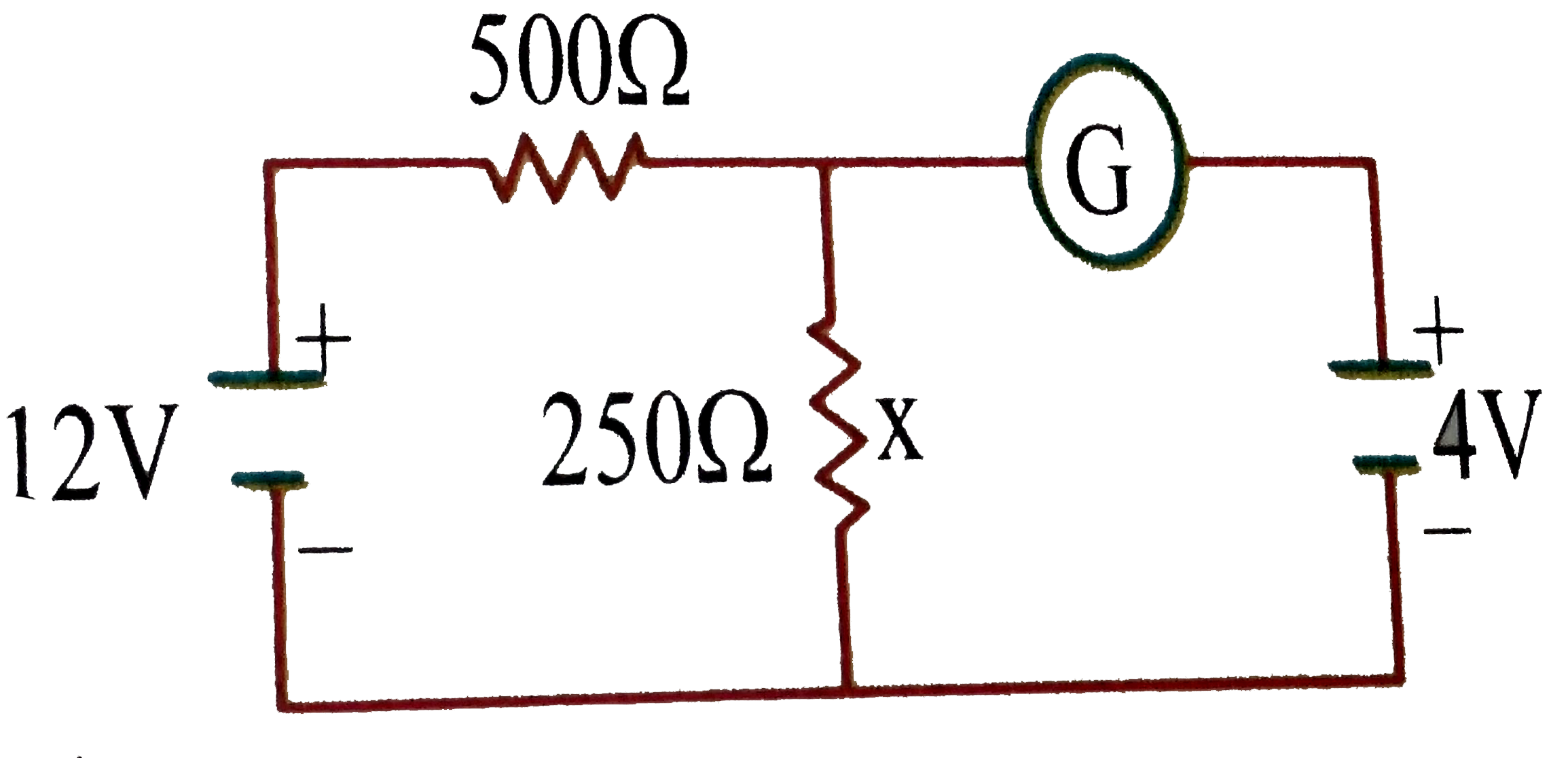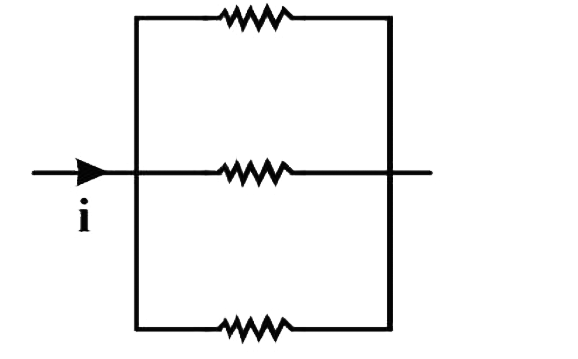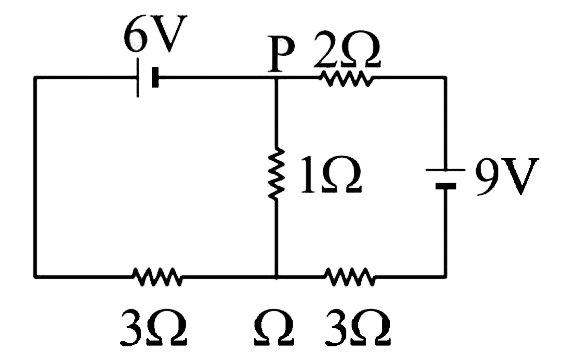Complete Solutions to Level 2 C.W of chapter CURRENT ELECTRICITY of Class 12 book with complete answers and questions
| Class 12 | PHYSICS |
| Chapter | CURRENT ELECTRICITY |
| NARAYANA | Level 2 C.W |
| Number Of Questions | 59 |
| Academic Year | 2023-24 |
In a hydrogen tube it is observed that through a given cross-section `3.13xx10^(15)` electrons per sec, moving from right to left and`3.12xx10^(15)` protons per sec are moving from left to right. The electric current in the discharge tube ad its direction is
View SolutionAnelectron of mass m, moves around the nucleus in a circular orbit of radius `r` under the action of ccentripetal force `F`. The equivalent electric current is
View SolutionThe current in a conductor varies with time `t` as `I=3t+4t^(2)` Where I in amp and t in sec. The electric charge flows through the section of the conductor between `t=1s` and `t=3s`
View SolutionA wire has non-uniform cross-section as shown in fig. steady current flows through it. The drift speed of electrons at point `P` and `Q` is `v_(P)` and `v_(Q)`

View SolutionA current of 16 A is made to pass through a conductor in which the number of density of free electrons is `4xx10^(28)m^(-3)` and its area of cross section is`10^(-5)m^(2)`. The average drift cross section is `10^(-5)m^(2)`. The average drift velocity of free electrons in the conductor is
View SolutionWhen 5 V potential difference is applied across a wire of length 0.1 m, the drift speed of electrons is `2.5 xx 10^(-4) ms ^(-1)`. If the electron density in the wire is ` 8 xx 10^(28) m^(-3)`, the resistivity of the material is close to :
View Solution
A current of 3A flows in a circuit shown in the figure. The potential difference between A and b is
View Solution
The resistance of the network between the terminals A and B is
View SolutionIn the figure, the value of resistors to be connected between `C` and `D` so that the resistance of the entire circuit between `A` and `B` does not change with the number of elementary set used is

View Solution
The effective resistance across the points A and I is
View SolutionIn the circuit shown below, the cell has an e.m.f. of `10 V` and internal resistance of `1 ohm`. The other resistances are shown in the figure. The potential difference `V_(A) - V_(B)` is

View SolutionA uniform wire resistance `20 Omega` having resistance `1 Omega per meter, ` is bent in the forms of a circuit if the equal - valent resistance between A and B is `1.8 Omega ` then length of the shorter section is

View Solution
If the voltmeter reads 0.2 V and the ammeter reads 0.101A, the resistance of the voltmeter is (in ohm)
View Solution
In the given ciruit Ammeter reading is same when both switches `S_(1),S_(2)` are closed or opened. The value of resistance R is
View Solution
In the following diagram ammeter reading is 4A, voltmeter reading is 20V, the value of R is
View SolutionTwelve resistors each of resistance `1 Omega` are connected in the circuit shown in figure. Net resistance between point A and H would be

View SolutionA resistance is made by connecting two wires (series) of same material of radii 2 mm and 5 mm and length 8cm and 5 cm. A potential difference of 22V is applied to them. The potential difference on the longer wre is
View SolutionA 220 V and 800 W electric kettle and three 220 V and 100 W bulbs are connected in parallel. On connecting this combination with 200 V supply, the total currentin the circuit will be
View Solution
What is the equivalent resistance of the circuit
View SolutionThe temperature coefficient of resistance of platinum is `alpha=3.92xx10^(-3)K^(-1)` at `20^(@)C`. Find the temperature at which the increase in the resistance of platinum wire is `10%` of its value at `20^(@)C`
View SolutionFour identical resistance are joined as shown in fig. the equivalent resistance between points A and B is `R_(1)` and that between A and C is `R_(2)`. Then ratio of `(R_(1))/(R_(2))` is

View Solution
If the galvanometer reading is zero in the given circuit, the current passing through resistance `250Omega` is
View Solution
The effective resistance between A and B is the given circuit is
View Solution
The equivalent resistance between points A and B of an infinite network of resistance each of `1Omega` connected as shown is
View Solution
Equivalent resistance across A and B in the given circuit is
View SolutionTwo resistance of `400 Omega` and `800 Omega` are connected in series with 6 volt battery of negligible internal resistance. A voltmeter of resistance `10,000 Omega` is used to measure the potential difference across `400 Omega`. The error in measurement of potential difference in volts approximatley is
View SolutionCopper and carbon wires are connected in series and the combined resistor is kept at `0^(@)C`. Assuming the combined resistance does not vary with temperature the ratio of the resistances of carbon and copper wires at `0^(@)C` is (Temperature coefficient of resistivity of copper and carbon respectively are `4xx(10^(-3))/(``^(@)C)` and `-0.5xx(10^(-3))/(``^(@)C)`
View SolutionThe three resistance of equal value are arranged in the different combination shown below. Arrange them in increasing order of power dissipation.
(I) (II)
(II) 
 (IV)
(IV) 
View SolutionIf `400 Omega` of resistance is made by adding four `100 Omega` resistance of tolerance `5%`, then the tolerance of the combinations
View SolutionIn the circuit shown, the current in the `1Omega` resistor is :

View SolutionThe temperature dependence of resistance of Cu and undoped Si in the temperature range `300 -400 K, ` is best described by :
View SolutionTwo wires A and B with lengths in the ratio of `3:1` diameters in the ratio of `1:2` and resistivities in the ratio of `1:20` are joined in parallel with a source of emf. 2V. Ratio of the
`(R_(1))/(R_(2))` is:
View SolutionAn electric heater operating at 220 volts boils 5 litre of water in 5 minutes. If it is used on 110 volts, it will boil the same amount of water in
View SolutionThree electric bulbs of 40 W, 60 W and 100 W have the tungsten wire of the same diamter. Then the longer wire is used by
View SolutionA fuse wire with radius of `0.2mm` blows off with a current of 5 Amp. The fuse wire of same material,but of radius 0.3 mm will blow off with a current of
(1) `5xx(3)/(2)Amp`
(2). `(5sqrt(3))/(2)Amp`
(3). `5sqrt((27)/(8))Amp`
(4). `5 Amp`
View SolutionIn a large building, there are 15 bulbs of 40 W, 5 bulbs of 100 W, 5 fans of 80 W and 1 heater of 1 kW. The voltage of electric mains is 220 V. The minimum capacity fo the main fuse of the building will be :
View SolutionThe supply voltage to room is 120 V. The resistance of the lead wires is `6Omega`. A 60 W bulb is already switched on. What is the decrease of voltage across the bulb, when a 240 W heater is switched on in parallel to the bulb?
View Solution
In the circuit shown here, cells A and B have emf 10 V each and the internal resistance is `5Omega` for A and `3Omega` for B. For what value of R will the potential difference across thhe cell A will be zero?
View SolutionIn the given circuit, with steady current, the potential drop across the capacitor must be

View Solution
In the circuit the galvanometer G shows zero deflection. If the betteries A and B have negligible internal resistance, the value of the resistor R will be:
View SolutionTwenty four cells each of emf 1.5 V and internal resistance 0.5 ohms are to be connected to a 3 ohm resistance. For maximum current through this resistance the nuber of rows and number of columns that you connect these cells is.
View SolutionA battery of four cells in series each having an efm of 1.5 V and internal resistance `1Omega` are connected in series with an ammeter, a coil of resistance `2Omega` and a filament lamp. If the ammeter reads 0.5 A, the resistance of the filament lamp is
View SolutionA 5V battery with internal resistance `2Omega` and a 2V battery with internal resistance`1Omega` are connected to a `10Omega` resistor as shown in the figure.

The current in the `10Omega` resistor is
View SolutionA voltmeter with resistance `500 Omega` is used to measure the emf of a cell of internal resistance `4 Omega`. The percentage error in the reading of the voltmeter will be
View SolutionWhen two identical cells are connected either in series or in parallel across a 4 ohm resistor, they send the same current through it. The internal resistance of the cell in ohm is
View SolutionTwo cells, having the same emf, are connected in series through an external resistance `R`. Cells have internal resistance `r_(1)` and `r_(2) (r_(1) gt r_(2))` respectively. When the circuit is closed, the potentail difference across the first cell is zero the value of `R` is
View SolutionTwo conductors have the same resistance at `0^@C` but their temperature coefficient of resistanc are `alpha_1 and alpha_2`. The respective temperature coefficients of their series and parallel combinations are nearly
View SolutionA galvanometer having a coil resistance of `100 omega` gives a full scale deflection , when a current of `1 mA` is passed through it. The value of the resistance, which can convert this galvanometer into ammeter giving a full scale deflection for a current of `10A` , is :
View Solution
The electric current I in the circuit shown is
View Solution
In the circuit chown in the figure, the current `I` is
View SolutionFour resistors A,B,C and D from a wheatstone's bridge. The bridge is balanced when `C=100Omega`, if A and b are inter changed, the bridge balances for `C=121Omega`. The value of D is
View SolutionIn the circuit shown below, the ammeter reading is zero. Then, the value of the resistance R is

View SolutionTwo unknown resistance X and Y are connected to left and right gaps of a meter bridge and the balancing point is obtained at 80 cm from left. When a `10Omega` resisance is connected in parallel to `x`, balance point is 50 cm from left. The values of X and Y respectively are
View Solution
In the meter bridge experiment, the length Ab of the wire is 1m. The resistors X and Y have values `5Omega` and `2Omega` respectively. When a shunt resistance S is connected to X, the balacing point is found to be 0.625 m from A. Then the resistance of the shunt is
View SolutionThe potential gradient long the length of a unifrom wire is `10 "volt"//meter`. `B` and `C` are the two points at `30 cm` and `60 cm` point on a meter scale fitted along the wire. The potential diffenence between `B` and `C` will be
View SolutionIn the determination of the internal resistance of a cell using a potentiometer, when the cell is shunted by a resistance R and connected in the secondary circuit, the balance length is found to be `L_(1)`. On doubling the shunt resistance, the balance length is found to increase to `L_(2)`. The value of the internal resistance is
View Solution
Figure shows a potentiometer circuit for comparision of two resistances. The balance point with a standard resistor `R=10.0Omega` is found to be 58.3 cm, while that with the unknown resistance X is 68.5 cm. the value of X is
View SolutionIn a experiment for calibration of voltmeter a standard cell of emf 1.5 V is balanced at 300 cm length of potentiometer wire. The P.D across a resistance in the circuit is balancedat 1.25 m. if a voltmeter is connected across the same resistance it reads 0.65 V. the error in the volt meter is
View SolutionThe current in the primary circuit of a potentiometer is `0.2 A`. The specific resistance and cross-section of the potentiometer wire are `4xx10^(-7)` ohm meter and `8xx10^(-7)m^(2)` respectively. The potential gradient will be equal to -
View Solution
Level 2 C.W questions and complete solutions for chapter CURRENT ELECTRICITY of NARAYANA PHYSICS (HINGLISH) of Class 12